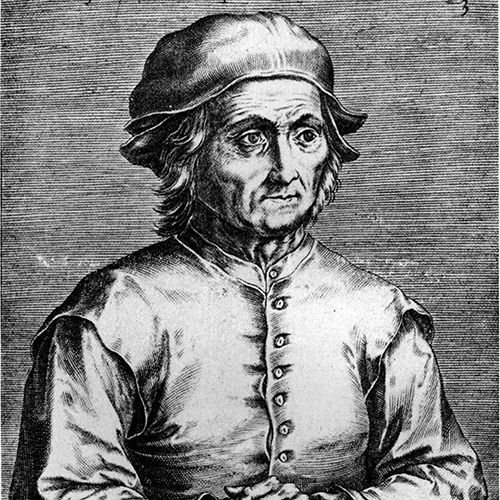You are viewing the article Hieronymus Bosch at Lassho.edu.vn you can quickly access the necessary information in the table of contents of the article below.

(1450-1516)
Who Was Hieronymus Bosch?
Hieronymus Bosch was a northern European painter of the late Middle Ages. His work utilizes striking and sometimes seemingly surreal iconography. Bosch painted several large-scale triptychs, including “The Garden of Earthly Delights” (c. 1510-15). Throughout his career, he used his art to portray the sins and follies of humankind and to show the consequences of these actions. He died in ‘s-Hertogenbosch in 1516.
Early Life
Born around 1450 in ‘s-Hertogenbosch, in the duchy of Brabant (now the Netherlands), Hieronymus Bosch remains one of the art world’s great enigmas. Little is known about his life, and the only clues have the few traces of him found in local records. Even his name is a bit misleading. He was born Jeroen van Aeken and took his professional name, in part, from his hometown.
Bosch came from an artistic family—his father, uncles and his brother were all painters by trade. It is believed that he was trained by a relative growing up. Around 1480 or 1481, he married Alety Goyaerts den Meervenne. His wife came from a wealthy family, and he enjoyed a comfortable life and improved social status through this union. A Catholic, Bosch joined the Brotherhood of Our Lady, a local religious organization devoted to the Virgin Mary, around 1486. Some of his first commissions came through the Brotherhood, but, unfortunately, none of those works survived.
Major Works
Known for his dark and disturbing visions, Bosch took a critical look at the world around in several of his works. With “The Cure of Folly” (c. 1475-1480), he poked fun of the misguided medical practices of the day. Bosch rebuked those who spent their lives seeking earthly pleasures in “The Ship of Fools” (c. 1490-1500).
Throughout his career, Bosch focused much of his attention to exploring religious themes. “The Haywain” (c. 1500-1502), a triptych, first shows Adam and Eve in its interior left panel. The center panel features both clergy and peasants engaged in sinful behavior. The right panel provides a gruesome illustration of where that type of behavior leads—hell.
In 1504, Bosch painted “The Last Judgment,” which illustrated the fall of humanity. He starts the triptych with the banishment of Adam and Eve from the Garden of Eden. The remaining two interior panels show the world’s descent into sin, violence and chaos. Bosch made another triptych, “The Temptation of Saint Anthony” (c. 1505-1506), a short time later. He shows the saint resisting the efforts of the devil to make him surrender to evil. There is an attempt to seduce Saint Anthony and then means of force are tried on him, but he is shown in the final panel being led away by a group of believers.
“The Garden of Earthly Delights” (c. 1510-1515) is one of Bosch’s later works. Again depicting the decline of the world through sin, primarily lust, a beautiful garden becomes a dark, fiery nightmare in the last panel of this triptych. This work, like so many of his pieces, serves as a visual lecture on morality.
Death and Legacy
Bosch died in ‘s-Hertogenbosch in August 1516 (the exact date of his death is unknown, but a funeral mass was held for him on August 9). While he enjoyed some success during his lifetime, he attracted an even grander fan soon after his death. King Philip II of Spain became a serious collector of Bosch’s work, and “The Garden of Earthly Delight” is said to have been hung in his bedroom to remind the Spanish monarch to stay on a righteous path. Today, the Museo Nacional del Prado in Madrid holds many of Bosch’s works.
QUICK FACTS
- Name: Hieronymus Bosch
- Birth Year: 1450
- Birth City: ‘s-Hertogenbosch, Brabant (now in the Netherlands)
- Birth Country: Netherlands
- Gender: Male
- Best Known For: Hieronymus Bosch was a European painter of the late Middle Ages. His two most famous works are “The Garden of Earthly Delights” and “The Temptation of St. Anthony.”
- Industries
- Painting
- Nacionalities
- Dutch
- Death Year: 1516
- Death City: ‘s-Hertogenbosch, Brabant (now in the Netherlands)
- Death Country: Netherlands
Fact Check
We strive for accuracy and fairness.If you see something that doesn’t look right,contact us!
CITATION INFORMATION
- Article Title: Hieronymus Bosch Biography
- Author: Biography.com Editors
- Website Name: The Biography.com website
- Url: https://www.biography.com/artists/hieronymus-bosch
- Access Date:
- Publisher: A&E; Television Networks
- Last Updated: April 14, 2021
- Original Published Date: April 2, 2014
Thank you for reading this post Hieronymus Bosch at Lassho.edu.vn You can comment, see more related articles below and hope to help you with interesting information.
Related Search: